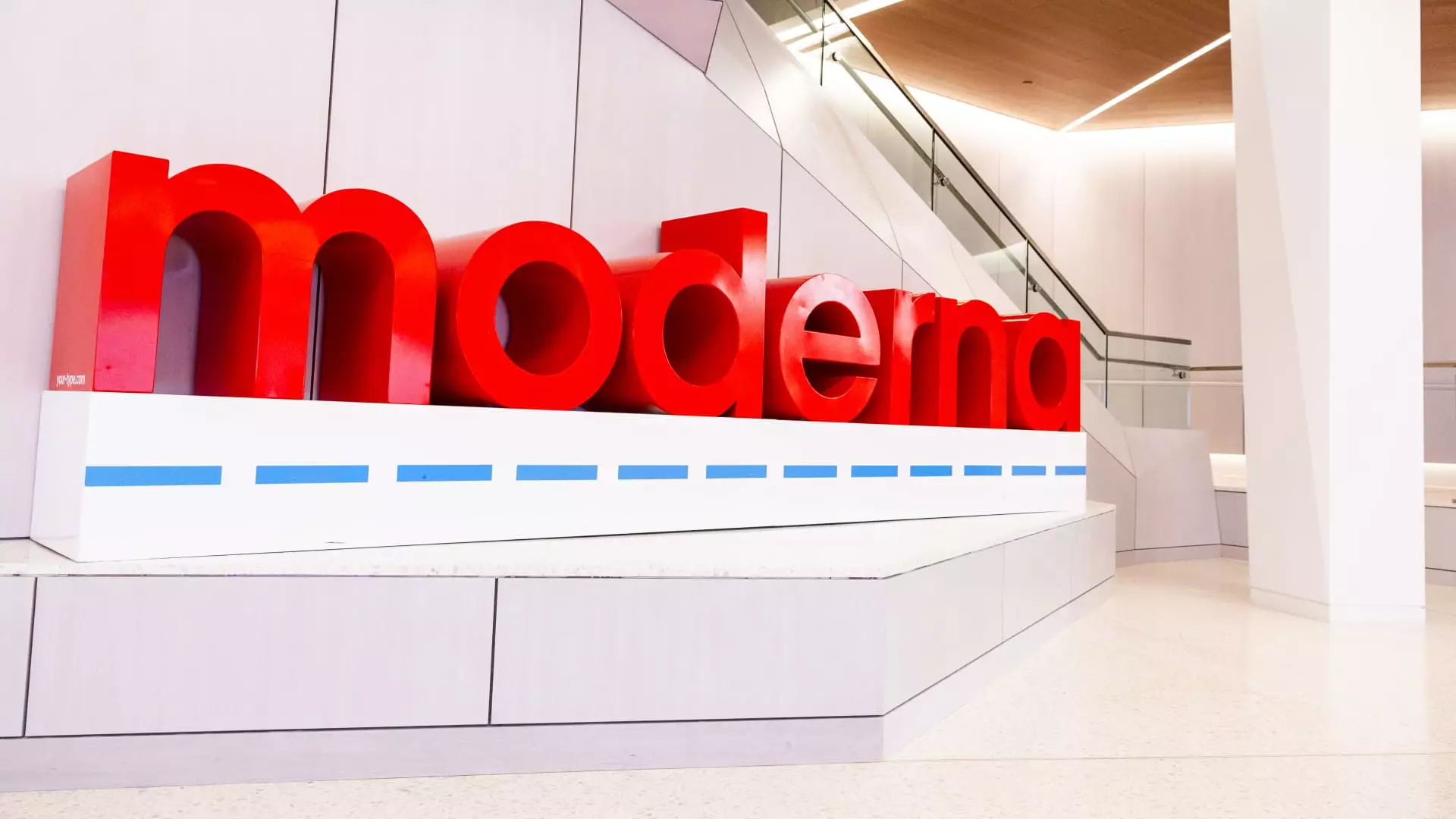Moderna Inc., once the darling of the biotechnology sector due to its rapid development of COVID-19 vaccines, has found itself in a turbulent financial landscape as it navigates the post-pandemic world. The company’s latest earnings report for the fourth quarter of 2024 is a compelling case study in both the triumphs and tribulations that can characterize the biotech industry during significant paradigm shifts.
In its recent quarterly earnings announcement, Moderna reported a staggering net loss of $1.12 billion for Q4, translating to $2.91 loss per share. This figure paints a stark contrast to the profitability of $217 million, or $0.55 per share, experienced in the same quarter the previous year. Such a dramatic reversal underscores the profound challenges that Moderna faces as it attempts to pivot away from its pandemic-era operational model. The reported revenue of $966 million did manage to exceed analysts’ expectations of $942.8 million, but it still represents less than half of the $2.8 billion recorded in the same quarter last year.
Much of this income stemmed from its COVID-19 vaccine sales, which brought in $923 million but reflected a staggering 66% decline from the prior year. This downturn can be attributed in part to a strategic shift in the timing of vaccine launches, suggesting that Moderna is responding to an increasingly competitive and uncertain market. Additionally, a $238 million noncash charge for ending a manufacturing agreement further accentuates the financial pressures the company is under, illustrating a need for cost restructuring.
One of the most noteworthy aspects of Moderna’s current operational strategy is its aggressive cost-cutting measures, which resulted in a 27% reduction in expenses year-over-year. Jamey Mock, Moderna’s Chief Financial Officer, indicated that the firm is aiming to pare down costs by an additional $1 billion by the end of 2025. In an industry known for high research and development expenditures, such reductions are crucial for long-term sustainability but may signal to investors a shift away from aggressive growth strategies.
The company’s ability to scale back operating expenses could provide crucial support as it grapples with shrinking vaccine revenues. However, this raises questions regarding the long-term viability of its ongoing research projects. While cost-cutting can yield immediate financial relief, an overly cautious approach might stifle innovation and delay the development of new products crucial to Moderna’s future profitability.
Looking forward, Moderna remains steadfast in its commitment to expanding its product portfolio. The company has ambitious plans, targeting 10 new product approvals within a three-year timeframe. This includes not only its next-generation COVID-19 vaccines but also a combination shot for both COVID-19 and influenza, as well as its recently approved RSV vaccine, which earned $15 million in U.S. sales. Despite these efforts, the projected revenue for the first half of 2025 is a mere $200 million, with the company forecasting much of its anticipated sales in the latter half of the year due to seasonal demand.
The strategic pivot has been necessitated by an influx of competition in the COVID-19 vaccine market, diminished vaccination uptake, and uncertainty surrounding healthcare guidelines. These variables have led to a revision downward of sales projections, contributing further to a decline in stock prices – which have plummeted over 20% this year since the conservative guidance was issued in January.
A significant factor that Moderna must navigate is the regulatory landscape concerning its new products. The company has submitted three mRNA products for regulatory approval, with expectations for the FDA to make critical decisions in the coming months. How these applications are received can considerably impact Moderna’s future growth trajectory, especially as the competitive landscape tightens.
Though the company is buoyed by its messenger RNA technology platform, the practicality of its rollout in the form of approved products remains uncertain. Each new product offering carries with it the risk of not meeting market expectations, especially in a healthcare environment that is becoming increasingly scrutinous of vaccine efficacy and safety.
Moderna is at a critical juncture, grappling with significant financial losses while simultaneously striving to redefine its operational strategy and product offerings in a rapidly evolving market. The forthcoming months will be telling; the efficacy of its new vaccine candidates, continued maturation of cost-reduction strategies, and how effectively it can regain investor confidence will determine the company’s trajectory. If these elements can be harmonized effectively, Moderna may yet navigate these challenges to emerge as a key player in the next wave of healthcare innovation. However, in the face of fierce competition and shifting demand patterns, the path ahead is fraught with uncertainty.

